Rivers come in all shapes and sizes. Today, we will look at the largest river deltas on earth and where to find them.
RELATED: The 12 Largest Rivers in Africa
A river forms a delta when it flows, along with its sediments, into a larger, more stagnant water body. We can compare a delta to a natural funnel that feeds fresh water into salt water and a river into the sea. This unique landform usually looks like a triangle. Its striking resemblance to the fourth letter of the Greek alphabet earned it the name delta.
Deltas form a crucial part of our ecosystem. The accumulation of sediments by rivers and floods creates a natural sieve that stops water pollutants. Furthermore, deltas are home to beneficial life forms such as crabs, oysters, mugwort, dolphins, and even tigers.
What are the parts of a Delta?
A delta is a middle ground between river and sea. This intermediary landform should have the following:
- Subaqueous delta: this is the lower part of the delta. Different sizes of sediments form this layer. The subaqueous layer has a dangerously steep slope caused by a drastic drop in velocity as the particles move from the river to the much more profound and broader sea. The soil profile contains silt, rich in nutrients and minerals, and supports plant growth.
- Subaerial delta: we can split the subaerial delta further into lower and upper deltaic plains. Waves and tides influence the lower table, while the river’s flow shapes the upper plain.
Top 10 Largest River Deltas on Earth (and Where to Find Them)
Tigris-Euphrates Delta in Southeastern Asia
This delta arises from joining two main rivers. They are Tigris and Euphrates, along with other smaller tributaries. The delta drains rivers across five countries; Turkey, Iran, Iraq, Syria, and Kuwait. It covers about 18,000 square kilometers and runs for 7,142 square miles. Mesopotamia is the area between the Tigris and Euphrates rivers.
This sizable delta proves the economic value of deltas. Locals believe that the first Mesopotamian civilization arose around this delta.
Niger Delta in Nigeria, Western Africa.
The Niger Delta is arguably one of the most revenue-generating rivers in Nigeria. The Niger River and its delta are home to many marine animals, including endangered species. The delta runs for about 150 miles from north to south, covering an expanse of 36,000 square kilometers and emptying into the Gulf of Guinea. The delta also has some historical importance. Through this delta, certain tribes built fortunes and began to trade agricultural products instead of the slave trade. This delta plays a significant role in agriculture, fishery, energy, and transportation.
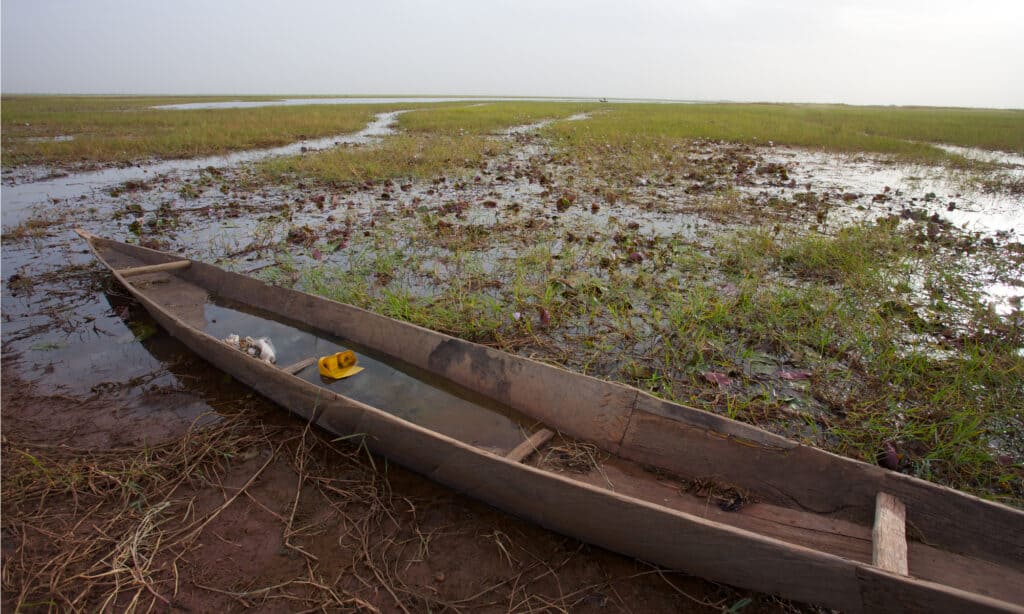
The Niger Delta is one of the 10 largest river deltas on Earth.
©Watch The World/Shutterstock.com
Orinoco Delta in Venezuela, South America
The Orinoco Delta remains uninhabited by humans. It is home to rivers, canals, swamps, and rainforests that preserve the delta’s wildlife profile. Within the delta is a national park, Mariusa National Park. This park houses a vast array of wildlife, birds of prey, anacondas, and other beautiful and deadly creatures. The delta and park preserve several endangered species, including the giant river otter, harpy eagles, bush dogs, Amazon river dolphins, and many more.
The Orinoco delta leads the Orinoco river, one of the longest rivers in South America, into the Atlantic Ocean. The delta runs for about 8,700 square miles.
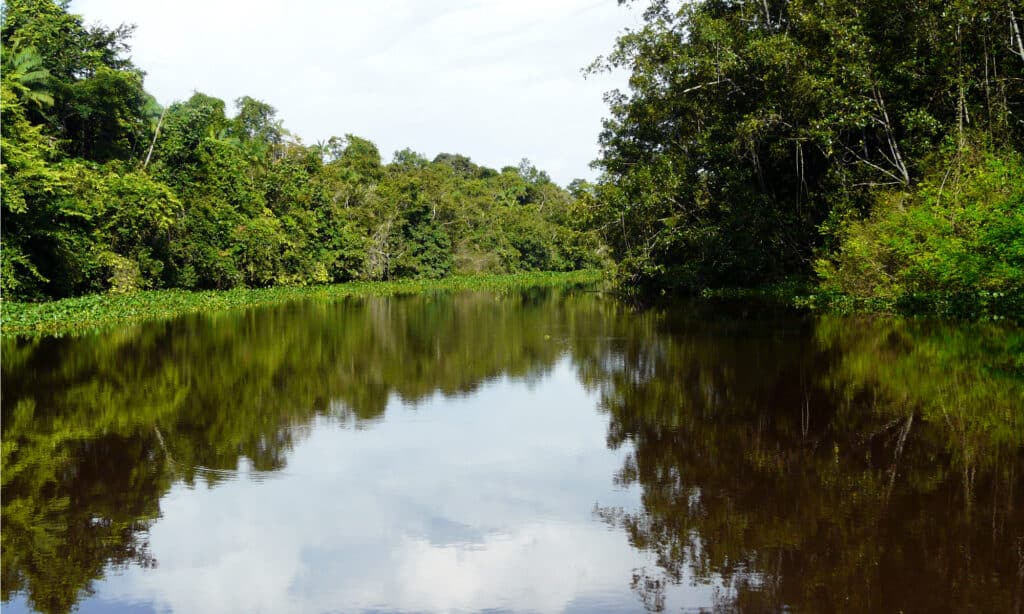
The Orinoco Delta, one of the 10 largest deltas in the world, is located in Venezuela.
©ALFONSO CAMARERO ORIVE/Shutterstock.com
Volga Delta in Russia
The Volga Delta is Europe’s largest delta. This bountiful delta drains 20% of Europe’s rivers, including the Volga River, accounting for 80% of the Caspian River’s inflow. It runs for 10,500 square miles. A view of this delta from space reveals that the delta splits into over 1000 ways before reaching the Caspian Sea.
This delta relieves thousands of migratory birds, including raptors and passerines. Sturgeons, carp, and catfish populations also seem to thrive well here.
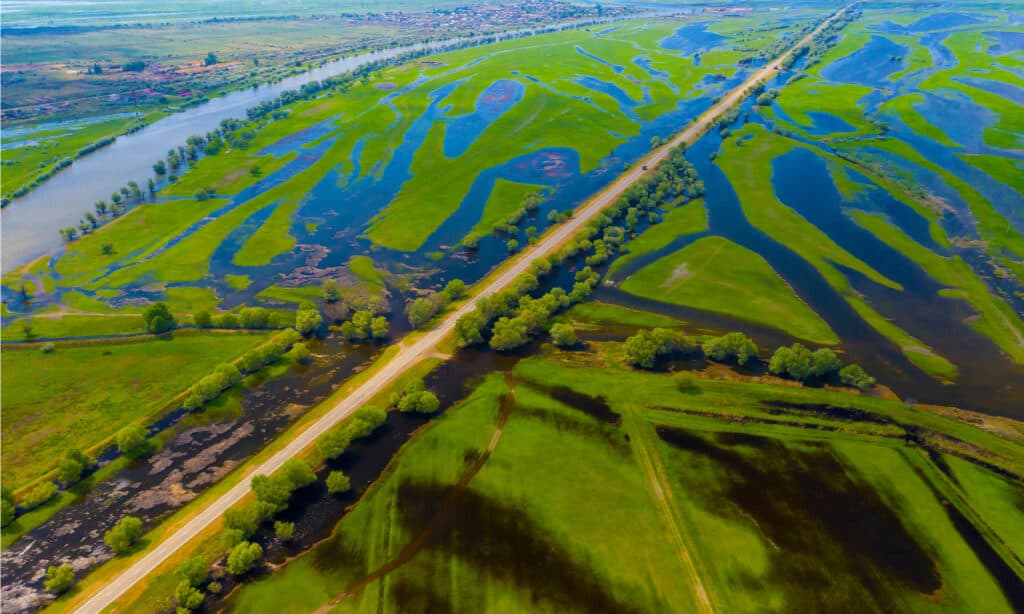
The Volga Delta in Russia is one of the largest river deltas in the world.
©Andy Shell/Shutterstock.com
Indus Delta in Pakistan
The Indus Delta begins where the Indus River meets the Arabian Sea. The climate surrounding this delta is arid. Thus, the delta receives only about 25 to 50 centimeters of rainfall every year. Lately, geographers call it the Dying Delta. This is because it suffers from a loss of vegetation. Its freshwater channels are running dry, causing the mangrove forests to shrink from 600,000 acres to a mere 182,000.
The mangrove forests in the Indus delta supply fuel wood. The Indus Delta covers about 11,400 square miles.
Mississippi Delta in the United States
The Mississippi Delta, which runs through Memphis, Helena, New Orleans, and Venice, is famous for its affiliations to music and art. Proponents refer to this delta as the cradle of American music, saying that it was here that music styles such as blues, Cajun music, jazz, and zydeco evolved.
Cotton plantations bloomed in the Mississippi in the era before the American Civil War. Because of the excellent planting soil, Mississippi saw an influx of planters who relied on the labor of enslaved Africans. Today, this area remains one of the most culturally diverse regions in South America.
Unfortunately, this great delta is shrinking fast. Every 100 minutes, open water swallows a patch of land the size of a football pitch. We have the constantly rising sea level to thank for that.
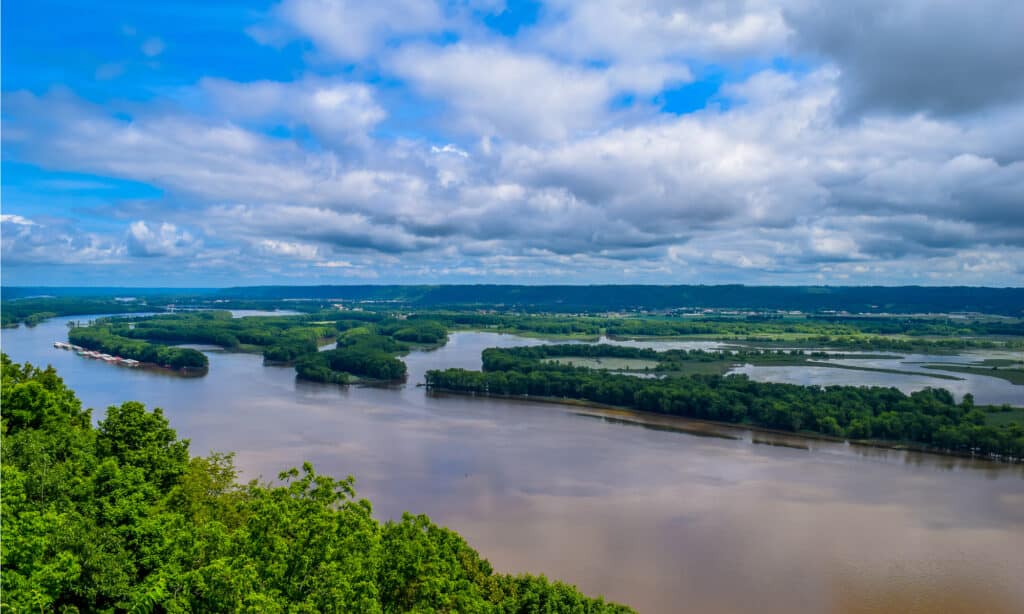
The Mississippi Delta is world-famous and is a major draw to the Southern United States.
©EyeTravel/Shutterstock.com
Huang He Delta in China
Records reveal that the location of this delta changes ever so often. The Huang He River, also called the Mother River, is termed ‘Wanderer.’ This is because its lower reaches often change course, thus shifting the position of the delta by a few hundred kilometers over the centuries. Recently, the Chinese have engineered the natural drifting of the delta. They hope to protect an immense field of oil and gas wells close to the delta.
The delta leads the Huang He river, also called the Yellow River, into the Yellow Sea. It is the most sediment-filled delta on Earth.
Lena Delta in Russia
The Lena Delta spans 30,000 square kilometers and protects an extensive range of wildlife. The delta, which is frozen tundra for seven months every year, temporarily becomes a lush wetland in the fifth month. The delta supports trade and travel; it is possible to transport cargo over the Lena Delta.
The Lena Delta Natural Reserve protects a part of the Lena Delta and is one of the largest protected areas in Russia. The Lena Delta is an excellent breeding ground for fish.
Mekong Delta in Southeastern Asia
Denizens call the Mekong Delta the Nine Dragon River Delta because it flows through nine main channels into the Southern China Sea. It is a biological treasure trove, housing over 1,000 animal and plant species.
Asians tend the high-yielding land surrounding this delta for agriculture. The produce from the Mekong Delta feeds about 20% of the Vietnamese population.
Animal geographers have spotted new mammals, reptiles, and amphibian species in some areas of the Mekong Delta.
This delta spans 36,209 square miles.
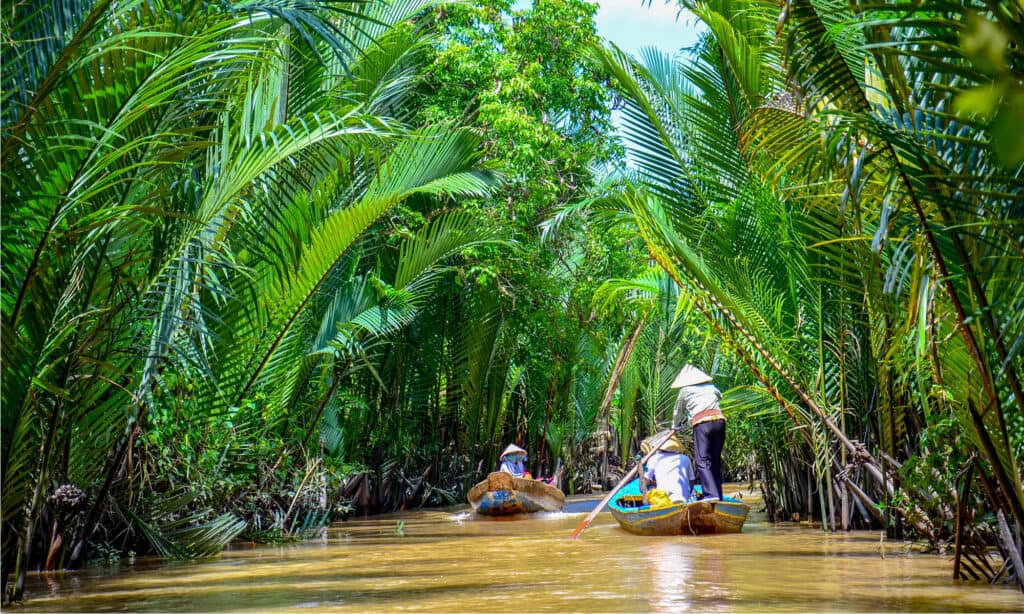
Vietnam’s Mekong Delta is a large tourist draw for its natural beauty and the region’s rich history.
©1WorldTravels/Shutterstock.com
Ganges-Brahmaputra in India
The Ganges-Brahmaputra Delta is the largest delta on Earth. It is a highly fertile land, warranting the name Green Delta. It also supports the highest population density among all deltas. The delta leads the Brahmaputra, Ganges, and other smaller rivers into the Bay of Bengal.
It is a typical arcuate delta measuring 105,640 square kilometers and 40,790 square miles.
Types of Deltas
Deltas can be classified based on their shapes or conditions leading to their formation.
Based on shapes, Deltas can be:
- Arcuate delta: the first kind of delta is the upright, triangular deltas. They are also called bow-shaped or fan-shaped. They have a convex surface. A prominent example is the Nile Delta in Egypt, which empties into the Mediterranean Sea.
- Cuspate delta: a cuspate delta forms when a river empties into a water body with solid waves. The strong waves prevent the sediments from settling rapidly, so the resulting delta is tooth-shaped. For example, the Ebro delta in Spain.
- Bird-foot delta: this delta has widely spaced distributions that extend like the claws on a bird’s foot. This is because the high velocity from the river carries fine particles farther into the seawater. The freshwater from the river is lighter than the seawater and thus floats over it. The Mississippi River is one such example.
- Inverted triangle: this relatively rare kind of delta forms when the narrower end of the delta is closer inland and the wider mouth nearer to the sea. An example is the San Sacramento River Delta.
Conclusion
Deltas are of appreciable economic importance. They support plant and animal life, agriculture and fishing, transport, and tourism.
The largest delta on Earth is the Ganges-Brahmaputra Delta in India, Asia. It has an area of 105,645 square kilometers.
It is no surprise that the most copious rivers flow into the largest deltas. For example, the Brahmaputra river is on our list of the 15 Largest Rivers in the world.
Up Next:
- Land of Lakes: The 20 Largest Lakes in Minnesota
- What is a Lake? 5 Features that Define a Lake
- Discover The 12 Longest Rivers in Asia
The photo featured at the top of this post is © 1WorldTravels/Shutterstock.com
FAQs (Frequently Asked Questions)
Which two rivers form the largest and fastest-growing deltas?
The Ganges and the Brahmaputra rivers pour into the Ganges-Brahmaputra delta, the world’s largest delta.
Which is the second largest inland delta in the world?
The Okavango Delta in Botswana is the second largest inland delta known to man. You can visit this delta through the Moremi Game Reserve within the vicinity. It spans up to 15,000 square kilometers.
How many deltas are in the world?
There are about 11,000 deltas worldwide, and they come in different shapes and sizes
Which is the most famous delta in the world?
The Nile Delta is the most famous. Historians mention it, and the shape of this landform inspired the name delta.
Thank you for reading! Have some feedback for us? Contact the AZ Animals editorial team.







